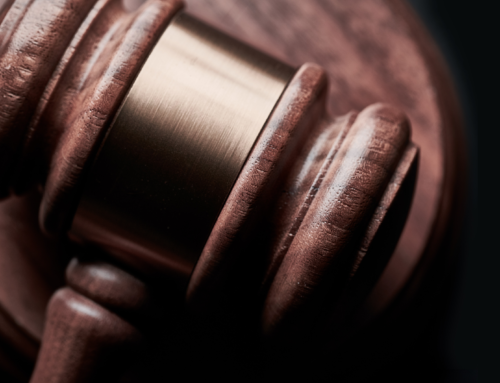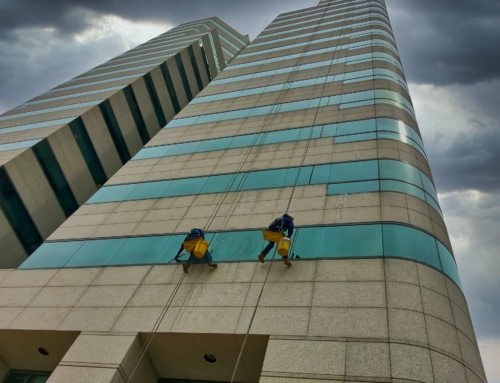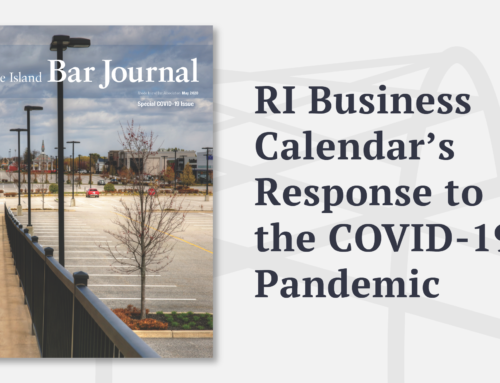Many construction documents, including documents utilized by the American Institute of Architects (AIA), contain a “Waiver of Consequential Damages” provision. For example, waivers are found in AIA B141, Part 1, Section 36 (Owner’s Contract with Architect), AIA 201 General Conditions of Contract, Section 15.1.6, 2007 Edition.
The A201 Waiver states as follows:
“CLAIMS FOR CONSEQUENTIAL DAMAGES”
The Contractor and Owner waive Claims against each other for consequential damages arising out of or relating to this Contract. This mutual waiver includes*:
- damages incurred by the Owner for rental expenses, for losses of use, income, profit, financing, business and reputation, and for loss of management or employee productivity or of the services of such persons; and
- damages incurred by the Contractor for principal office expenses including the compensation of personnel stationed there, for losses of financing, business and reputation, and for loss of profit except anticipated profit arising directly from the Work.
*(The above language states “This mutual waiver includes” therefore only items 1 and 2 are included in the waiver of consequential damages.) (It should be noted that Contractor’s extended General Conditions and other site expenses are not waived by the above language.)
“This mutual waiver is applicable, without limitation, to all consequential damages due to either party’s termination in accordance with Article 14. (This paragraph may mean that only the items that are noted in the termination provisions are recoverable and not “consequential damages”.) Nothing contained in this Section 15.1.6 shall be deemed to preclude an award of liquidated damages, when applicable, in accordance with the requirements of the Contract Documents.” (Emphasis supplied). (AIA201 15.1.6).
The question is, “what constitutes the consequential damages?” The Massachusetts Appellate Division in the matter of 0 ‘Malley vs. Moghul, (Mass. Appellate Div. No. 98WAD 014), stated “by definition, consequential damages are those that cannot be reasonably prevented and arise naturally from the breach or which are reasonably contemplated by the parties.”
The definition as noted in “US Legal” of consequential damages, is: “Consequential damages are those that are not a direct result of an act, but a consequence of the initial act. To be awarded consequential damages in a lawsuit, they must be a foreseeable result of an act.”
Thus, consequential damages unfortunately are not defined in the AIA Documents and the definition is vague and ambiguous in relation to any court decisions.
Generally speaking, common examples of direct damages to both an owner and contractor are those damages that occurred during the construction period, such as contract balances, costs to repair defective work, back charges, destruction of property, non-conforming work, etc.
By contrast, CONSEQUENTIAL DAMAGES ARE LOSSES TO THE NONBREACHING PARTY RESULTING NATURALLY BUT NOT NECESSARILY FROM THE BREACH.
CONSEQUENTIAL DAMAGES TO THE CONTRACTOR COULD BE OVERHEAD EXPENSES, LOST PROFITS, LOST OPPORTUNITY, DIMINISHED BONDING CAPACITY, DAMAGES FOR FINANCING, HOME OFFICE OVERHEAD (KNOWN AS THE EICHLEA Y FORMULA).
CONSEQUENTIAL DAMAGES TO THE OWNER COULD INCLUDE LOST RENT OR REVENUE RENT AL PAYMENTS, INCREASED COSTS OF ADMINISTRATIVE SUPERVISION, ARCHTECTURAL CONSULTING FEES, BORROWING COSTS, ETC.
Consequential damages are usually a question of fact.
Notwithstanding, an Owner who waives consequential damages in relation to its General Contractor pursuant to AIA 201 Section 15.1.6, waives all “consequential damages” which apparently are “any damages” except for “liquidated damages.” Thus, in the event of any delay of a project or any other “consequential damages,” the Owner is only entitled to liquidated damages if applicable in the contract between the parties. In the event that there are no liquidated damages, the Owner waives any “actual damages.”
The waiver of consequential damages may be in conflict with other provisions in the contract between the parties, such as indemnification clauses which may benefit the Owner. (The indemnification provision contains certain damages which are the basis for recovery pursuant to the indemnification clause.)
The consequential damage clause also excludes any damages in relation to termination of the contract between the parties, etc. contained in Article 14 of AJA A201.
ON THE OTHER HAND, the General Contractor waives consequential damages with the owner, other than termination costs pursuant to the termination provisions in Article 14 of AIAA201.
The question is whether or not the Contractor waives consequential damages as to any other provision of A201, which question is ambiguous at best.
Under A201, the General Contractor has additional remedies against the Owner, notwithstanding a waiver of termination.
For example, A201 provides that a General Contractor may make claim for concealed or unknown conditions pursuant to 3.7.4 and .5; change orders pursuant to 7.2, constructive change directives pursuant to 7.3; claims for delay and extension of times under Article 8.3; Article 15 “Claims and Disputes,” specifically Section 15.1.4 “Claims for Additional Costs.” The same discussion as noted above can be made with agreements between the Owner and the Architect in the event that there is a waiver of consequential damages.
Thus, an Owner may be limited to no damages and the Contractor may be entitled to damages pursuant to other provisions of the agreement.
Therefore, Owners and Contractors should seek legal advice as to whether or not a Waiver of Consequential Damages provisions should be deleted to maintain their respective rights of recovering damages in the event of a breach of contract or an action of negligence against the other party. 0\\-ners especially should be aware of the significance of waiving the consequential damages provision, since if consequential damages are in fact waived, owners may lose their right to recover such damages as finance costs, insurance costs, loss of profit, loss revenue, loss of rental, etc., other than any liquidated damage provisions in the contract.
Contractors, on the other hand, assuming a waiver of consequential damages, may still recover through other provisions of the construction agreements as noted in this article.
GRV
(Revised 1012912020)






